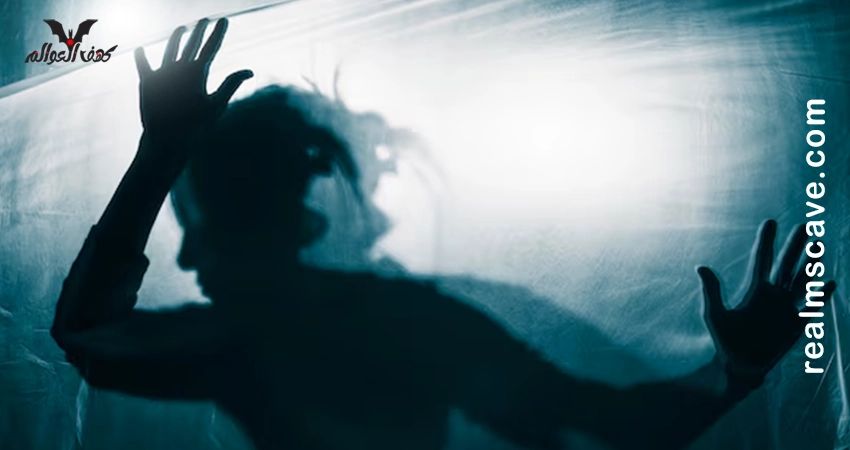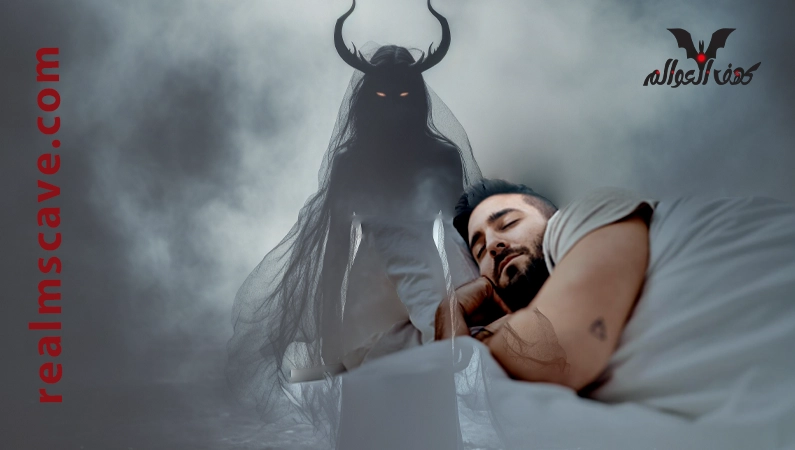Ruqayyah bint Shamharush: Daughter of the King of the Jinn
Ruqayyah bint Shamharoush: Is it a fact or a myth rooted in Moroccan folklore?
At the core Moroccan folklore Rich in secrets and stories passed down through generations over the centuries, the name “Shamaroush” stands as a legendary king. Muslim jinnA just and wise judge said to administer the affairs of the underworld of the jinn from his mysterious weekly court in the village of Sidi Shamharoush near The towering Mount Toubkal, the highest mountain peak in Morocco. This sacred site is said to attract visitors from both humans and jinn, seeking to resolve disputes, seek blessings, or even fulfill long-held wishes. Described as possessing supernatural power and great wisdom, Shamharoush is believed to have the power to influence human events, whether by offering hidden assistance or imposing severe punishments on those who transgress his boundaries.
From this mysterious world, filled with supernatural phenomena and secrets, emerges the character of "Ruqayyah bint Shamharoush," one of the most controversial and mysterious mythical figures in oral traditions that circulate among people and online forums abuzz with stories and tales. While Shamharoush is described as having absolute power, eternal wisdom, and boundless influence over the worlds of humans and jinn, information about his daughter, Ruqayyah, remains shrouded in secrecy and mystery, lacking any documented historical or religious sources.
This mystery surrounding Ruqayyah, the daughter of the legendary jinn king, makes her a focal point for exploring new dimensions in Moroccan folklore Surprisingly, it delves into the impact of oral stories on shaping popular beliefs deeply rooted in Moroccan culture. Is Ruqayya bint Shamharoush merely a figment of the imagination woven by time through storytellers? Or is she a reality lurking in the world of the jinn, waiting to be revealed? Follow along in this article as we explore the secrets of this legendary character and delve into the depths of amazing Moroccan folklore!
Moroccan Folklore: Historical Background
Moroccan folklore is a part of popular heritage that includes stories, legends, tales, and beliefs passed down through generations, often by oral tradition. Folklore is defined as “the set of ancient arts, stories, tales, myths, and material culture confined within the customs and traditions of a particular population.” In Morocco, folklore is characterized by its cultural diversity, blending Berber, Arab, and Islamic influences with elements from African and Andalusian cultures. These narratives include stories of jinn, saints, and spiritual kings, and are often used to explain natural phenomena or reinforce cultural identity.
Ruqayyah bint Shamharoush: Identity and Role
Ruqayyah bint Shamharush is mentioned in some unverified online sources, such as spiritual forums and video sites like Kwai, as a queen of the righteous jinn, allegedly the daughter of Shamharush. In these accounts, Ruqayyah is described as appearing in dreams after performing a specific ritual for seven nights, offering assistance in matters such as uncovering treasures, solving problems, or even "bringing back a lover." However, this information comes from unscientific sources and is often associated with dubious spiritual practices.
In the context of ancient books, there are no direct references to “Ruqayyah bint Shamharush” in reliable historical or religious manuscripts, such as books of interpretation or hadith. Even in spiritual books such as The Great Sun of Knowledge Ahmad al-Buni's controversial book, Al-Buni, does not explicitly mention this character. The book itself, considered a work of magic and sorcery, focuses on rituals and incantations related to jinn, but does not directly mention "Ruqaya" or "Shamharoush." This suggests that the character of Ruqaya may be the product of a later development in popular folklore, perhaps in the modern era.
Ancient sources and folklore
Ancient books on folklore or spirituality in the Islamic world, such as Ibn Sirin's dream interpretation books or Sufi manuscripts, do not contain clear references to Ruqayyah bint Shamharush. However, similar stories about jinn queens can be found in Arab folklore, such as Laqis bint Iblis or Hind bint al-Ahmar, who are mentioned in some popular narratives as powerful figures of good or evil jinn. These characters bear a resemblance to Ruqayyah's role in helping or influencing human lives.
On the other hand, some modern sources, such as the book Tales from Moroccan folklore According to Lysry Shaker, Moroccan folk tales are diverse, including tales of jinn and spirits. However, these books do not mention "Ruqiya" by name, reinforcing the hypothesis that she is a relatively recent figure in Moroccan folklore.
Cultural and social context
The character of "Ruqayya bint Shamharoush" demonstrates how folklore can evolve to reflect the needs of society. In Morocco, where spiritual beliefs intertwine with daily life, stories of jinn are used to explain unexplained phenomena or offer solutions to problems such as love, poverty, or conflict. However, scholars and jurists warn against engaging in these practices, as some rituals associated with characters like Ruqayya or Shamharoush are considered contrary to Islamic teachings.
Criticism of sources
The information available about "Ruqayyah bint Shamharoush" comes primarily from unreliable online sources, such as spiritual forums and video sites. These sources lack scientific accuracy and rely on popular narratives without historical documentation. Ancient books, such as Shams al-Ma'arifThere is no direct evidence for the existence of this character, making her more of a part of modern folklore than a historical or religious figure. It is important to treat these accounts with caution, especially in light of religious warnings against the practices of magic and sorcery.
And finally
"Ruqaya bint Shamharoush" is a legendary figure in Moroccan folklore, associated with the jinn king Shamharoush, a symbol of power and justice in popular narratives. Although commonly cited in oral histories and online forums, it lacks reliable historical or religious sources. This character demonstrates how folklore evolves to reflect culture and social needs, but it should be treated with caution due to its association with undocumented spiritual practices. It is advisable to consult scholarly and historical sources for a deeper understanding of Moroccan folklore, while avoiding the trap of unsubstantiated beliefs.





إرسال التعليق